Petunias Should Be Pruned A Few Times Per Growing Season To Keep Them At Their Best

Reviewed By COLIN SKELLY

Colin is a Horticulturist and Horticultural Consultant with experience in a range of practical and managerial roles across heritage, commercial and public horticulture. He holds the Royal Horticultural Society’s Master of Horticulture award and has a particular interest in horticultural ecology and naturalistic planting for habitat and climate resilience.
IN THIS GUIDE
PETUNIA GUIDES
Container Growing
Deadheading
Hanging Baskets
Legginess
Overwintering
Pruning
Sowing
Surfinia
Low on maintenance needs but high on visual impact, petunias are favoured in gardens throughout the country for the profusion of colourful flowers they produce and the ease with which they can be cared for.
With plentiful sunlight, water and drainage, they’ll thrive in any environment.
Having said that, pruning petunia plants is a necessary means of maximising their appeal.
As well as deadheading spent blossoms to encourage a longer and more prolific flowering season, you should also trim back long, leggy or damaged stems to help keep the plant’s shape and structure.
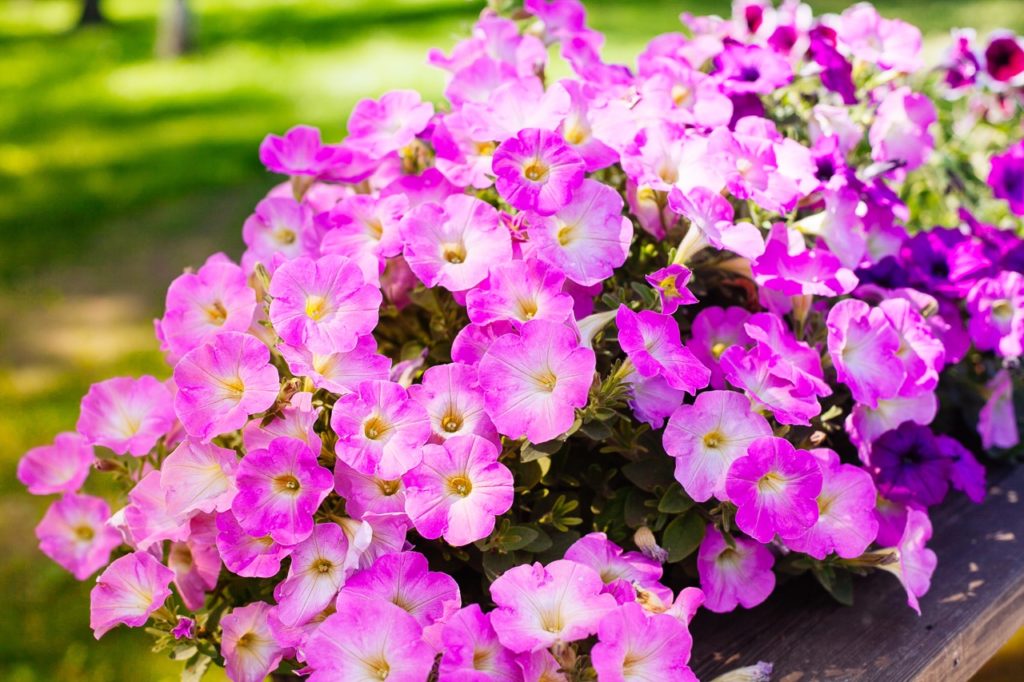
While the plant will survive without regular pruning, it certainly won’t look its best, which is a shame given the undemanding nature of the task and the fantastic potential of petunias.
Here’s how you can achieve that potential in four easy steps:
- Prepare your tools for pruning by sharpening and cleaning the blades of your secateurs.
- Deadhead spent blooms as often as you need depending on the cultivar.
- Prune leggy stems by half their length, being careful not to remove too much of the plant.
- Compost any trimmings and care for your petunias after pruning.
I’ve clarified each stage in greater detail below and also explained a little more about the best times to prune your petunia selection.
| Difficulty | Easy |
| Equipment Required | Gardening gloves, pruning shears or secateurs, fertiliser |
| When To Prune | July to September |
When To Prune Petunias
Strictly speaking, it’s not 100% necessary to prune your petunias more than once during the growing season.
However, I like to do so 3 times in order to encourage maximum performance and retain an optimum structure for the plant.
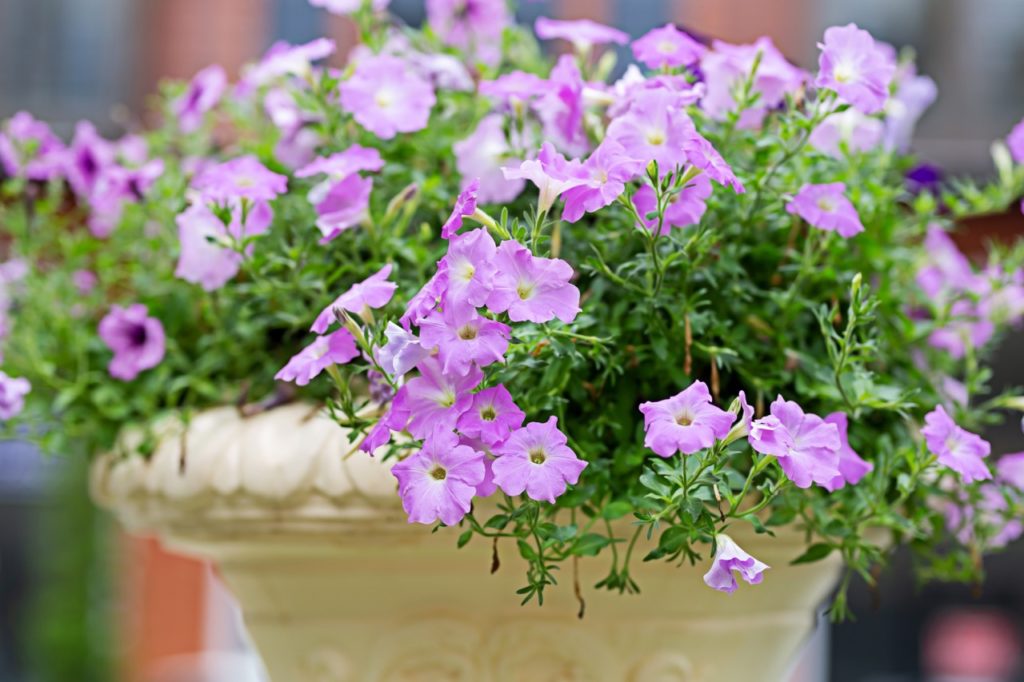
My first pruning session takes place at the outset of July, once the petunias have enjoyed their early summer spurt of growth.
I’ll then revisit the plant in mid-August and then in mid-September, following the same process each time.
Be mindful that deadheading is a different proposition altogether and is a topic we’ve covered in its own separate guide.
1) Prepare Your Tools
A bad workman may blame his tools, but a good gardener cares for his.
Taking the time to sharpen and clean the blades of your secateurs or pruning shears can ensure you make clean cuts and prevent the spread of fungi or diseases.
Personally, I like to disassemble my secateurs when sharpening them.
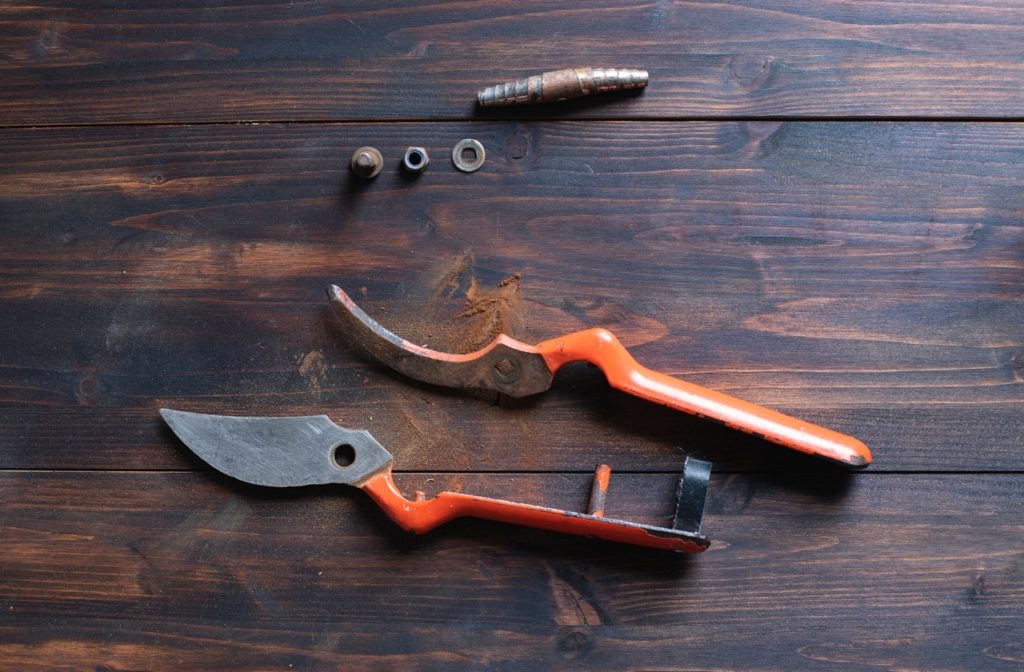
Although this is not strictly necessary, it does make the job easier and safer.
I then fix their position in a vice, before using a file to sharpen the blades.
Finally, I’ll wipe them down with a clean cloth soaked in isopropyl alcohol to remove any impurities left behind and voila!
They are clean and ready for use.
“After every use of my secateurs, I clean off the sap before it dries on, use a fine sharpening stone to work the edge and then oil the blades and spring,” says Horticultural Consultant Colin Skelly.
‘Every month, I’ll use a coarser stone on the blades. This ensures a sharp cut, clean pruning cuts, and a quicker job that is easier on the hands and wrists – let the tool do the work!”
2) Deadhead Spent Blooms
Petunias are one of the many types of flowering plants which will benefit immensely from deadheading on a regular basis.
That’s because removing the whole flower, including the seed pod, diverts energy away from seed production and back into flowering.
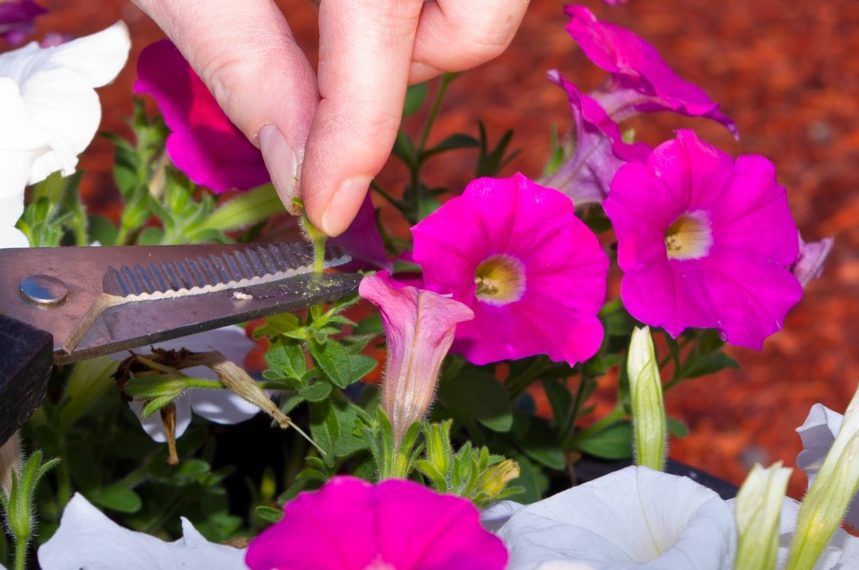
With that in mind, I recommend deadheading spent blooms as often as your chosen cultivar requires.
See our guide to deadheading for more thorough information.
3) Remove Leggy Stems
With your deadheading schedule underway, it’s time to tackle pruning properly as soon as July arrives.
If your plant has had its needs satisfied thus far, it will have enjoyed impressive growth during May and June, so it’s a good idea to trim back long, leggy or drooping stems to keep it in shape.
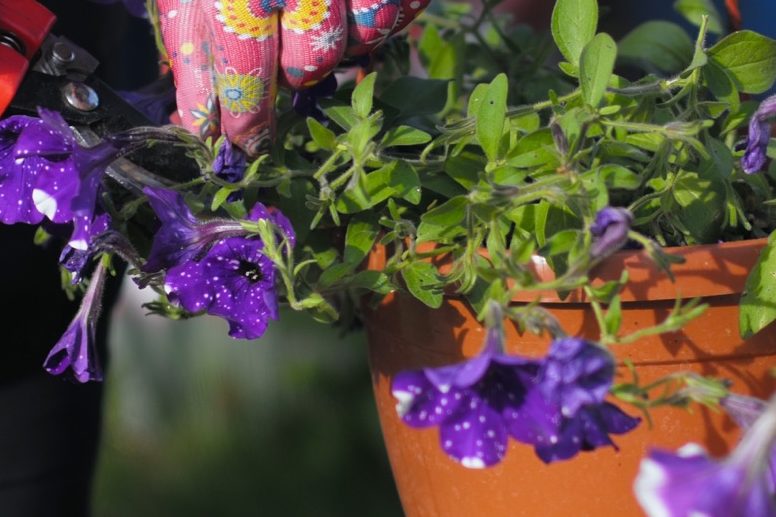
Once I have identified a stem in need of attention, I’ll normally strip it by half its length.
This will ensure a tight and compact shape for the plant, contributing to an overall neat and tidy aesthetic.
When pruning, take care not to strip a stem back to any less than 5cm from its base and do not remove more than 33% of the whole plant at a time, as this can be damaging.
4) Compost Any Trimmings
Finally, you’ll want to leave the petunia plant in the best state possible to come back stronger.
This means gathering up all of the stems, flower heads and foliage you have just severed and disposing of them in your compost heap.
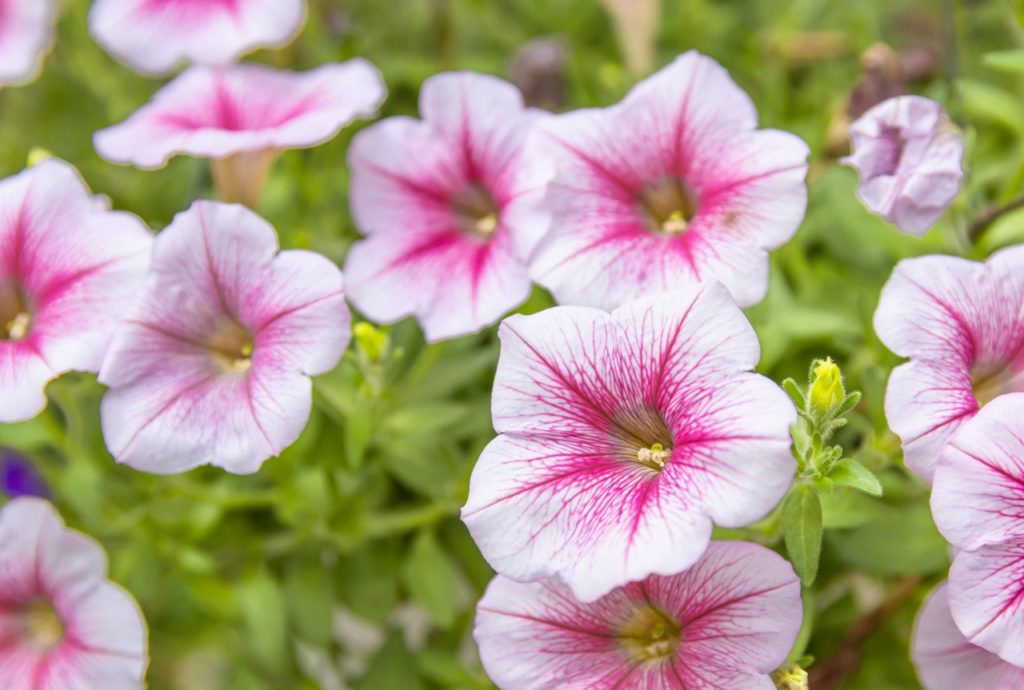
This will encourage better air circulation and reduce the risk of disease.
You can treat the plant with an all-purpose fertiliser containing equal parts nitrogen, phosphorous and potassium, spraying the soil to enrich its nutrient uptake.
Failing that, I have found that mulching the base with manure or well-rotted compost is another effective way to promote regrowth after pruning.

